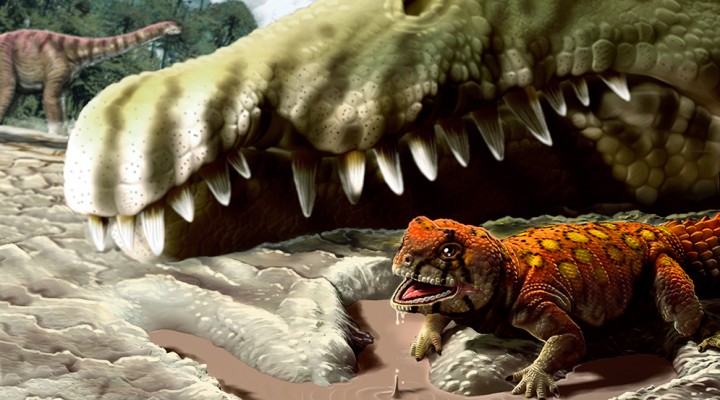CONICET paleontologist found the oldest lizard of the African Continent
Sebastián Apesteguía was in charge of the find of Jeddaherdan aleadonta, which appeared in a drawer at the museum where he worked.
Sometimes, what we seek for is closer than we think. Sebastián Apesteguía, researcher at the National Scientific and Technical Research Council of Argentina (CONICET), has found the Jeddaherdan aleadonta, the first and the oldest acrodontan lizard of the African Cretaceous –and the oldest iguanian of the continent, 90 million years old. Nevertheless, this find did not take place when surveying in a remote inhospitable area surrounded by tools, as most of the times. Apesteguía found it when he was studying fossil collections that were in the drawers of the museum where he worked, the Natural History Museum in Paris.
It all began during the 50s, when the famous paleontologist René Lavocat conducted surveys in the Moroccan desert, where he found large amounts of fossils that were transported to the Natural History Museum in Paris. Many of those were analyzed and reported decades ago, whereas others, the weird ones, remained forgotten in the drawers of the place.
In 2009, thanks to a project funded by the Mairie de Paris –which was destined to make the most of the collections of the museum-, Apesteguía went to study sphenodontians. While he was studying the remains, he found the jaw of the Jeddaherdan aleadonta. Later on, the find was published in last number of the scientific journal Royal Society Open Science.
Acrodontan lizards
According to the researcher, the lizards are the oldest dinosaurs: they were originated at the beginning of the Mesozoic era, 240 millions of years ago. So who are these iguanian lizards? They are a group of exceptionally diverse lizards that has more than 1,700 species in all the world including chamaeleonidae, anolis, phymaturus palluma and almost all ground lizards that appear in Argentina.
There are several groups of iguanians. Most of them have their teeth in a hollow of the jaw, except for the acrodontan, which developed teeth strongly adhered to the edge of jaws. They live currently in many parts of the world, specially in Africa and Asia. We can find the chameleons, the agamas, gliding and frilled-neck lizards.
The history of the acrodontant lizard includes several finds 40 million years old, that is to say, from the Cenozoic Era. However, in the last two years, researchers provided revolutionary information for this group: first the Gueragama, an acrodontan of the Cretaceous in Brazil, which was found in 2015, and now the Jeddaherdan.
The finds of the acrodontant lizards of the Late Cretaceous in Brazil and Marruecos are remarkable. They highlight the presence of tiny herbivores that lived in the shadows of the huge dinosaurs, which were too small to be eaten but had to avoid being stepped on.
When Apesteguía found the fossils, he consulted with an expert in lizard fossils at the Museum in Paris, Dr. Rage, who confirmed the identification. After that, the paleo-herpetologists Juan Daza and Tiago Simões joined, making the team that would transform a small remain in a drawer into the oldest iguanian lizard of Africa.
Characteristics
The fossil is a partial global jaw that allowed scientists to learn that the animal had a 0,098 feet long skull and was almost 0,49 feet tall body. It was originally found in Gara Tabroumit, one of the places that originate the Kem Kem Beds, 500 kilometres from the south of Rabat.
The species was called Jeddaherdan aleadonta, a combination of jeddi, which means grandfather for the Amazigh berber language from Morocco, and aherdan, the name of Uromastyx, the thorny tail lizard, which is the closer living relative of our fossil. And aleadonta, means ‘dice teeth’ in reference to the cube-like dentition.
The study was in charge of the Fundación Azara (CONICET-Universidad Maimónides, Argentina), the Sam Houston State University (USA), the University of Alberta (Canada), and the Muséum National d’Histoire Naturelle (France).
